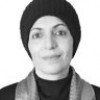Artemis astronauts should add a Zoom call for the ages to their schedule
Humans from Earth, according to the latest schedule, will walk on the moon again sometime in late 2026. While no one will be surprised if the date of the next moonwalk is moved farther into the future, it will be a world-inspiring event that will be as profound, in its way, as the very first moon landing, which took place on a summer night in 1969.
NASA has already laid out the broad outlines of what the two astronauts who land on the moon will do. They will check their spacecraft’s system, eat, sleep and refresh themselves for the week-long sojourn to come.
Then, “During their moonwalks, the astronauts will take pictures and video, survey geology, retrieve samples, and collect other data to meet specific scientific objectives.”
NASA has already chosen three instruments that the astronauts will leave behind to study the moon long term. They include:
- the Lunar Environment Monitoring Station (LEMS), which monitors moonquakes and provides insights into the moon’s crust and mantle;
- the Lunar Effects on Agricultural Flora (LEAF), which will be, in effect, a lunar greenhouse that will track plant photosynthesis, growth, and systemic stress responses........
© The Hill





















 Toi Staff
Toi Staff Gideon Levy
Gideon Levy Belen Fernandez
Belen Fernandez Dr Ramzy Baroud
Dr Ramzy Baroud Rachel Marsden
Rachel Marsden Tarik Cyril Amar
Tarik Cyril Amar Warren J. Blumenfeld
Warren J. Blumenfeld Andrew Mitrovica
Andrew Mitrovica Jože P. Damijan
Jože P. Damijan Sabine Kinkartz
Sabine Kinkartz Adam Makary
Adam Makary Ghada Ageel
Ghada Ageel Steve Wenick
Steve Wenick John Nosta
John Nosta
